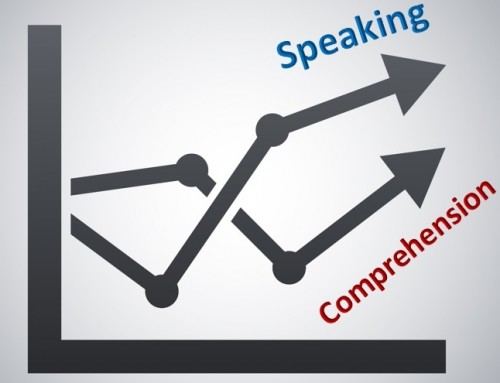Project Description
English and Spanish are among the hardest languages to learn in the world. They are difficult, however, for completely opposite reasons. Spanish is fortified by a complex grammatical structure which is quite challenging to learn. The pronunciation of the language, however, is simple and straightforward. Each letter of the Spanish alphabet makes one sound and only one sound. Therefore, what you see is what you say.
English is exactly the opposite. The grammar and verb conjugations of English certainly take some time to learn. But they’re a breeze in comparison to Spanish grammar. On the other hand, English pronunciation consists of one frustrating exception after another. There is often no rhyme or reason to a word’s pronunciation. And anyone who seriously intends to learn the English language had better get used to hearing this frequent answer to their questions: “that’s just the way it is.” Post continues below ↓
Why is Spanish one of the hardest languages to learn?
Fluent communication in Spanish requires a mastery of more than a dozen verb conjugations. It has this in common with other Latin-based romance languages such as French and Italian. This vast grammatical complexity is further complicated by a dizzying set of rules and exceptions to the rules which are hard to keep straight. These daunting challenges of Spanish grammar are the primary reason why Spanish is a difficult language to learn.
Consider, for example, the verb comer (to eat). In English, there are only a few ways to talk about eating. If it’s you or me, both of us, you and someone else or two other people…the verb is consistently the same;
I eat, you eat, we eat, y’all eat or they eat
The only exception is if it was one singular person (not you or me). In that case, we say eats.
He eats, she eats
If any of these people are doing it now, you say they are eating.
And if any of these people did their eating in the past, regardless of who it is, you say they ate.
Lastly, if your point is that the person no longer needs to eat, you say they have eaten.
That’s it! In the entire English language, regardless of who is eating or when they’re eating, there are only 5 variations (conjugations) of the verb.
- eat
- eats
- eating
- ate
- eaten
Conjugation Constipation
In Spanish, there are 5 variations of the verb comer (to eat) in the present tense alone!
- yo como (I eat)
- tú comes (you eat)
- él / ella come (he / she eats)
- nosotros comemos (we eat)
- ustedes / ellos comen (y’all / they eat)
In the past tense, comer has another 5 conjugations. In the other past tense, another 5. The future, conditional, present perfect and past perfect tenses of comer each have another 5 conjugations for you to learn. And that’s not including the conjugations of the verb in the subjunctive mood, which are critical for fluent speaking.
And if that wasn’t complicated enough, the command form of the verb (imperative) will depend on whether you have a familiar or formal relationship with the person you’re commanding. What!? Now you have some idea of why the verb conjugations of Spanish makes it one of the hardest languages to learn.
Why is English one of the hardest languages to learn?
To fully understand the complexity of American English, one has to consider many aspects of American culture. Compared with other countries, everything about the US is fast. We have fast freeways, fast food, fast delivery, fast internet and instant coffee. Plus, Americans work fast and hard. Everything around the workplace is designed and arranged to make workers faster, more productive and more efficient. And one of the most important tools which facilitates this quick work is the language Americans use to communicate. It’s quick, short and to the point.
As a result, the English language has been whittled down to its bare essentials in the common vernacular of American conversations. The highs, lows and pauses of a sentence are often eliminated, replaced by a quick, even utterance of only the essential sounds. Therefore, a common, everyday questions such as “What are you going to do?” sounds more like “whatcha gonna do?”. “I’m going to go over there” sounds more like “I’m gonna go o’er there.” Or even shorter: “Ima go o’er there.”
Before an English learner has any chance of understanding these abbreviated, chopped up types of sentences, they must first learn the long and correct way of saying them. That takes time. And this is one of the reasons why English is one of the hardest languages to learn.
Inconsistent Pronunciation
Another factor which makes English a difficult language to learn is the inconsistent pronunciation of its letter combinations. A student correctly pronounces the word “dove” and “above” because he already knows how to say “love.” But then he comes across the words “move” and “prove” and must accept that the “ove” in these these words is pronounced very differently that the “ove” of “dove” and “above.”
Anyhow, he accepts that there’s simply two ways of pronouncing this letter combination and continues his studies. But then he comes across the words “cove” and “wove.” They also have “ove.” But they don’t sound like “love” nor “move.” Could there possibly be three ways of pronouncing “ove?” Yes there are!
And don’t even get me started on though, through and thought. These three words have been perplexing English learners for centuries. Again, they all include the same letter combination (ough). But that combination has a different pronunciation in each of the three words. In though, it sounds like “ooo.” In through, it sounds like “oh.” And in thought, it sounds like “ah.” That’s confusing.
Each English vowel has a long and a short pronunciation. Combined with other letters, they make a variety of sounds. This is not so in Spanish. Every letter of a Spanish word gets pronounced with the same pronunciation it has in every other word. Only the letter H is silent.
Phrasal Verbs
For those who wish to learn or teach English, you’d better get used to phrasal verbs. These verb + preposition combinations are found throughout the English language. They’re yet another example of how Americans shorten and simply language to make it quicker and easier. Consider for a moment that each of the following phrasal verbs have a different meaning;
- get up
- get down
- get in
- get out
- get by
- get away
- get away with
- get through
- get on
- get off
- get after
- get across
- get around
- get at
- get between
- get into
- get under
- get over
Not only do these phrases have different meanings. But each one has multiple meanings! And this is just a simple list of the phrasal verbs that include “get.” The same thing can be done with other common verbs like run, take or come.
Most of these phrasal verbs are used in place of a specific, less common verb. To “get after” someone is to scold them. To “get across” a point to someone is to convey a point. To “get away” is to elude. But instead of learning rare words like scold, convey and elude, Americans slap a common verb and a common preposition together. And this new, resulting phrase becomes the new way of expressing that action.
If you’re interesting in learning or teaching phrasal verbs, the most important book to use and reference is Ultimate Phrasal Verbs, by Carl Hart. It is without a doubt the most comprehensive book which explains phrasal verbs. It also includes hundreds of excellent exercises. I cannot recommend it enough. It makes a difficult language like English a little easier to learn and teach.








